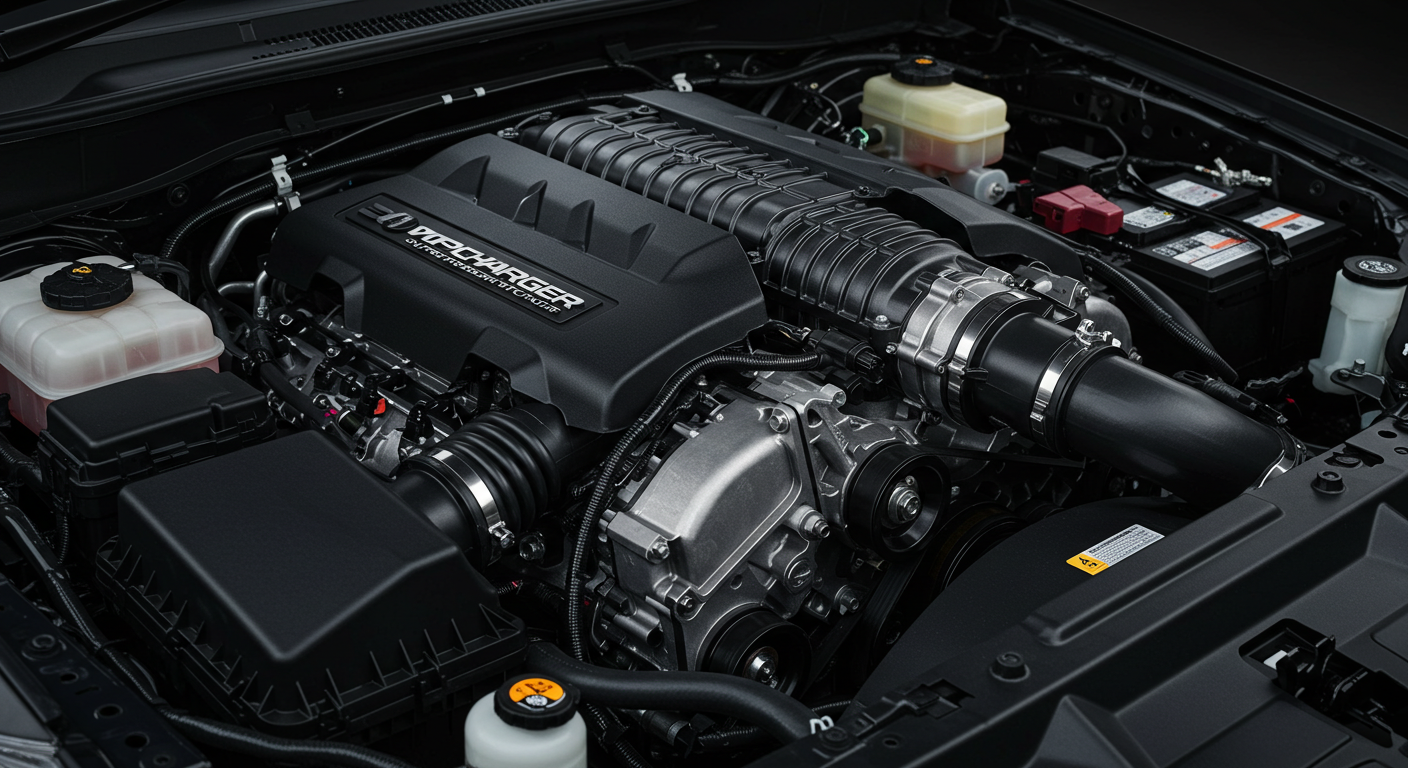Introduction to Electric Vehicles
Electric vehicles (EVs) have gained significant traction in recent years, reflecting a broader societal shift toward sustainability and environmental responsibility. With the increasing awareness of climate change and the harmful emissions produced by traditional gasoline-powered vehicles, many consumers are turning to EVs as a viable alternative. This growing popularity can be attributed not only to heightened environmental consciousness but also to advancements in battery technology, which have improved the performance and range of electric vehicles.
One of the primary advantages of EVs is their potential to reduce greenhouse gas emissions. Unlike conventional vehicles, which rely on internal combustion engines, electric vehicles utilize electric power stored in batteries. This shift leads to a substantial decrease in tailpipe emissions, contributing to cleaner air and a smaller carbon footprint. Furthermore, EVs are often more cost-effective to operate, as electricity typically costs less than gasoline and electric engines require less frequent maintenance.
Understanding the types of electric vehicles available is essential. Battery electric vehicles (BEVs) operate solely on electric power, using large battery packs to store energy. In contrast, plug-in hybrid electric vehicles (PHEVs) combine a traditional internal combustion engine with an electric motor, allowing drivers to switch between gasoline and electric power. This diversity in EV types broadens consumer choice, catering to various preferences and needs.
The need for reliable charging infrastructure is paramount as the market for electric vehicles expands. Charging stations serve as crucial infrastructure that supports the growth of EV adoption, making it feasible for drivers to recharge their vehicles conveniently. As more individuals transition to electric power, familiarizing oneself with the different charging levels and available options will be essential for a smooth driving experience.
The Importance of Charging Infrastructure
The development of charging infrastructure is a critical component in the widespread adoption of electric vehicles (EVs). As more consumers consider transitioning to EVs, one of the primary concerns that arises is range anxiety. This term refers to the fear that an EV will run out of battery power before reaching a charging station, leaving the driver stranded. Addressing this concern is essential for encouraging potential buyers to invest in electric vehicles, as the availability and accessibility of charging stations play a crucial role in their decision-making process.
Charging networks must expand and become more strategically placed to mitigate range anxiety. With a comprehensive array of charging stations available, EV owners can feel confident that they can recharge their vehicles conveniently during long trips or daily commutes. This assurance not only promotes the use of electric vehicles but also supports the sustainability objectives of reducing carbon emissions and reliance on fossil fuels. Furthermore, a robust charging infrastructure fosters a more resilient relationship between the consumer and the EV industry.
From an economic perspective, enhancing the charging infrastructure has several implications. It can create jobs in installation, maintenance, and operation of charging stations while attracting investments in renewable energy sources. Establishing a network of charging stations also contributes to the development of local economies, especially in urban and rural areas where accessibility may currently be limited. By ensuring that charging stations are available across diverse communities, we support equitable access to clean transportation.
Ultimately, the importance of charging infrastructure cannot be overstated. It significantly impacts consumer adoption of electric vehicles, addresses range anxiety, and plays a vital role in driving economic growth. By prioritizing the expansion of charging networks, society can move towards a future where electric vehicles are an integral part of everyday life.
Overview of EV Charging Levels
Electric vehicles (EVs) have become an integral part of modern transportation, and understanding the different charging levels is essential for effectively managing their energy requirements. EV charging is categorized into three primary levels: Level 1, Level 2, and DC Fast Charging, each distinguished by varying voltage, current, charging speeds, and typical applications. This overview seeks to elucidate these differences to aid users in selecting the appropriate charging solution for their needs.
Level 1 charging utilizes a standard 120-volt outlet, making it the most accessible option for most households. This method typically provides a current of up to 16 amperes, delivering around 4 to 5 miles of driving range per hour of charging. Level 1 is best suited for overnight charging or situations where the vehicle will remain stationary for an extended period. This slower rate may not suffice for individuals with extensive daily commutes, but it’s a practical choice for many urban dwellers.
Level 2 charging operates at 240 volts and can provide a current ranging from 16 to 80 amperes, significantly increasing charging speeds. It is capable of delivering approximately 10 to 60 miles of range per hour depending on the power output of the station. Level 2 chargers are commonly found in public charging stations, workplaces, and residential setups with dedicated circuits. Their versatility makes them a favored option for EV owners who seek to replenish battery capacity in a shorter time frame.
DC Fast Charging represents the pinnacle of charging technology, supplying direct current at voltages often exceeding 400 volts. This method can recharge an EV to about 80% capacity in as little as 30 minutes, providing hundreds of miles of range. Commonly situated along highways and major travel corridors, DC Fast Chargers are ideal for long-distance travel, allowing drivers to quickly recharge during extended journeys.
In conclusion, understanding the operational differences among the various EV charging levels empowers users to make informed decisions regarding their charging needs, improving the overall EV ownership experience.
Level 1 Charging: The Basics
Level 1 charging is the most straightforward form of electric vehicle (EV) charging, relying on a standard 120-volt household outlet. This method of charging is accessible to most homeowners and requires minimal equipment, making it a popular choice for those new to electric vehicles. All that is needed is the EV’s portable charging cable, which typically comes with the vehicle. Simply plug the charger into the outlet and connect it to the vehicle, and charging begins.
Charging speeds with Level 1 can be modest, providing approximately 3 to 5 miles of range per hour. While this may seem slow compared to higher charging levels, it is ideal for daily users who can leave their vehicle plugged in overnight. For individuals with shorter commutes, generally under 40 miles a day, Level 1 charging can provide a sufficient range added during the night. This method becomes practical for those who predominantly drive local errands, ensuring that their vehicle is consistently topped off by the morning.
However, for users with longer daily commutes, Level 1 charging may prove inconvenient, as the slower rate could result in insufficient charging for an extended trip. In such cases, optimizing Level 1 charging at home can significantly improve convenience. To do this, drivers should ensure that their outlet is in good condition, using dedicated circuits where possible to minimize the risk of overloading. Additionally, using a smart home charging timer can help schedule charging during off-peak electricity hours, potentially reducing energy costs.
While Level 1 charging has its limitations, it serves as an essential facet of EV ownership, providing a simple, economical solution for many electric vehicle users.
Level 2 Charging: A Step Up
Level 2 charging represents a significant advancement in the efficiency of electric vehicle (EV) charging solutions. This charging level operates using a 240-volt outlet and can deliver a substantial amount of power, enabling vehicles to gain approximately 10 to 60 miles of range per hour. For EV owners, this level of charging is tremendously beneficial, as it reduces downtime and increases the convenience of keeping vehicles charged and ready to travel.
To install a Level 2 charging station, certain requirements must be met. Typically, installation involves a dedicated circuit with a suitable electrical service capable of handling the increased voltage and amperage. Homeowners may need to consult with a licensed electrician to assess their existing electrical system and ensure compliance with local codes. Notably, the installation may also include additional costs associated with upgrading home electrical systems to support this enhanced charging capability.
Level 2 charging stations can be found in various locations, contributing to the growing infrastructure for electric vehicles. Public charging stations are increasingly common in urban settings, often strategically placed in areas like shopping centers and parking garages. Workplaces are also beginning to offer Level 2 chargers to support employees who commute via EVs, promoting a more sustainable work environment. Additionally, many EV owners choose to install Level 2 chargers at home, allowing for efficient overnight charging that fits seamlessly into their daily routines.
For those considering the purchase of a Level 2 charging station for personal use, various factors should be considered. These include the type of EV owned, charging speed requirements, and available space. Additionally, researching different models and their compatibility with specific vehicle makes can significantly aid in selecting the right hardware. By understanding the benefits and requirements of Level 2 charging, users can make informed decisions that will enhance their electric vehicle experience.
DC Fast Charging: Quick and Efficient
DC Fast Charging is an essential technology in the electric vehicle (EV) ecosystem, providing drivers with a rapid method to replenish their vehicle’s battery. Utilizing high-voltage direct current, these fast chargers can significantly reduce the time required for charging, enabling users to charge their battery up to 80% in approximately 30 minutes. This capability makes DC Fast Charging particularly advantageous for long-distance travel, as it allows EV owners to quickly stop for a charge and continue their journey with minimal delay.
The charging speed offered by DC Fast Charging is a result of its ability to deliver a higher power level compared to Level 2 AC chargers. While conventional charging stations may take several hours to provide a full charge, DC fast chargers can achieve substantial battery levels in a fraction of the time. This rapid refueling option dramatically expands the range of electric vehicles, alleviating concerns about running out of power on long road trips and making EV ownership more practical for many drivers.
The growing network of DC Fast Charging stations across various regions reflects the increasing demand for efficient charging solutions. Many locations, including highway rest stops and urban areas, now feature these fast-charging stations to accommodate the needs of EV users. To find DC Fast Charging stations, drivers can utilize mobile applications or online maps specifically designed for EV travelers, which often provide real-time information about station availability and charging speeds.
Understanding how to utilize these charging stations is equally important. Drivers should familiarize themselves with the specific connections and payment options available at different locations. Pre-planning trips that involve numerous charging stops can ensure a smooth journey and keep charging time to a minimum. Ultimately, the accessibility and efficiency of DC Fast Charging contribute significantly to the overall viability of electric vehicles in modern transportation.
Charging Networks and Apps
The landscape of electric vehicle (EV) charging is shaped significantly by various charging networks and the apps that accompany them. As the demand for electric vehicles rises, numerous charging networks have emerged, each offering unique features and pricing structures. Popular networks include ChargePoint, EVgo, and Tesla Supercharger, which are designated to facilitate efficient charging across diverse locations. Each of these networks plays a vital role in ensuring drivers can conveniently access charging stations while out on the road.
Membership options are often available within these networks, with varying levels of subscription plans. Some networks may offer pay-as-you-go options, while others provide a monthly subscription model, potentially yielding cost benefits for frequent users. Understanding these different pricing structures is fundamental for EV owners to manage their expenses effectively while ensuring they have sufficient access to charging infrastructure. Additionally, some networks feature tiered pricing that adjusts based on time of day or charger availability, encouraging users to charge during off-peak hours to optimize costs.
The importance of charging apps cannot be overstated. These applications serve as essential tools for EV drivers, enabling them to locate charging stations, check availability in real-time, and monitor their charging sessions. Users can also often filter charging stations based on network compatibility and charging speed, allowing them to find the most suitable option for their vehicle. Inter-network compatibility is another critical aspect of the charging ecosystem; many networks are engaging in partnerships or standardizing their connections to simplify the charging process for users. This cooperation aims to enhance the overall EV charging experience and aligns with the goal of broader EV adoption.
Safety and Maintenance of EV Charging Equipment
The increasing adoption of electric vehicles (EVs) necessitates a thorough understanding of safety and maintenance practices related to EV charging equipment. Ensuring electrical safety is paramount; users must always handle charging stations with care to prevent accidents. Before plugging in or unplugging an EV, one should ensure that their hands are dry, and the ground around the charging station is free from water, thus avoiding the risk of electrical shock.
Another precaution involves the circuit on which the charging station is connected. Overloading circuits can lead to overheating and potential fires. It is advisable to use dedicated circuits for charging and to understand the amperage rating of the circuit to prevent exceeding its capacity. Utilizing a Level 2 home charger, which operates on a higher current, may require a dedicated circuit installation by a qualified electrician to ensure safety and compliance with local codes.
Proper installation of charging equipment is critical for both safety and performance. Users should always hire certified professionals for the installation of EV chargers to ensure adherence to safety standards. This not only enhances the efficiency of the charger but also minimizes the risk of malfunction or accidents. Well-installed chargers will typically include features such as ground fault protection, which helps prevent electrical hazards.
Regular maintenance checks of EV charging stations are also essential. Users should inspect charging cords for any signs of wear or damage and ensure that connectors remain clean and free from debris. If any issues arise, such as decreased charging speed or equipment overheating, it is crucial to troubleshoot these concerns promptly or consult with a professional. Addressing small issues before they escalate can ensure the longevity of the charging equipment.
Implementing these safety tips and best practices can significantly enhance the user experience of EV charging stations, contributing to a safer environment for electric vehicle owners and the community at large.
Future of EV Charging: What to Expect
The future of electric vehicle (EV) charging offers an exciting glimpse into technological advancements that promise greater convenience and efficiency for users. As the demand for electric vehicles continues to rise, innovative solutions in charging infrastructure are being developed to meet the needs of consumers. One significant trend is the emergence of wireless charging technology. This development eliminates the need for physical connections, allowing drivers to simply park their vehicles over charging pads. As this technology evolves, the convenience of charging at home, work, or public spaces will become more accessible, thus encouraging the adoption of electric vehicles.
Another area of advancement is ultra-fast charging solutions. These systems are designed to drastically reduce charging times, providing a full charge in less than 30 minutes in some cases. As battery technology improves, we can expect to see charging stations installed along highways and in urban settings, making long-distance travel more feasible for EV owners. This increase in charging speed not only enhances the user experience but also addresses one of the main concerns potential buyers have regarding EV ownership: range anxiety.
Furthermore, the development of smart charging networks plays a crucial role in the future of EV charging. These networks are designed to optimize charging based on electricity demand and supply, helping to balance the load on the grid. Integration with renewable energy sources such as solar and wind power will enable consumers to charge their vehicles using clean energy, thus further promoting sustainability. Innovations in artificial intelligence and machine learning can also contribute to predictive maintenance and more efficient energy management systems, making EV charging smarter and more user-friendly.
As these trends unfold, the future of EV charging not only promises enhanced convenience for users but also aims to drive broader adoption of electric vehicles, thereby contributing to a cleaner and more sustainable environment.










